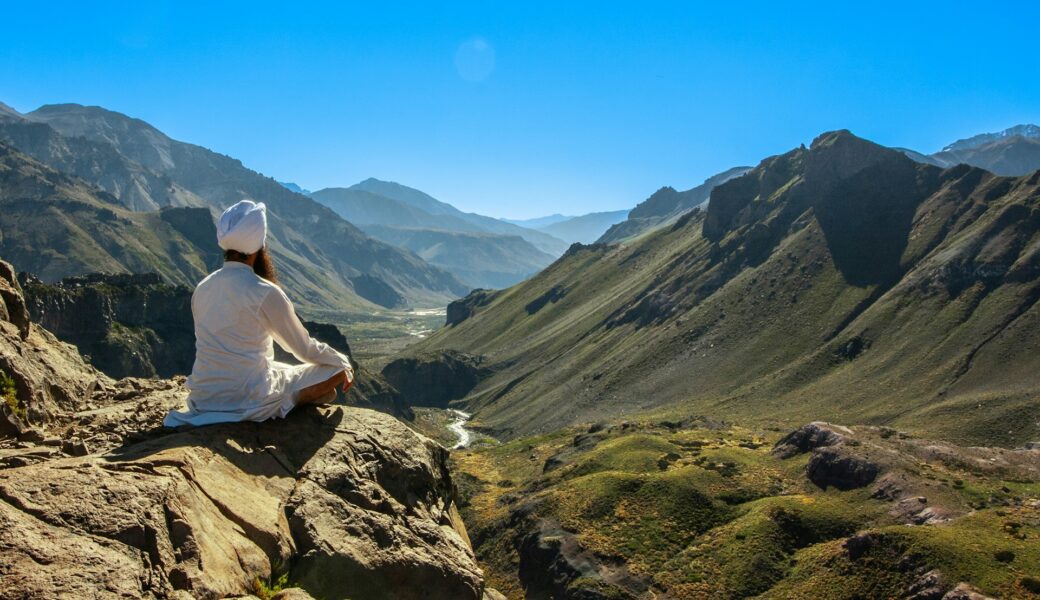The Himalayas, with their towering peaks, serene valleys, and spiritual aura, are a dream destination for yoga enthusiasts. A yoga retreat in this majestic mountain range offers a perfect blend of physical practice, mental clarity, and cultural immersion. From the sacred town of Rishikesh to the tranquil hills of Dharamshala, the Himalayas provide an ideal setting for beginners and seasoned yogis alike. This 2000-word guide, crafted for beginners, details how to plan and enjoy a yoga retreat in the Himalayas, including top destinations, booking tips, and practical advice. Written in simple, easy-to-understand language, this unique, SEO-friendly article naturally incorporates all required keywords across different paragraphs, ensuring a beginner-friendly experience for travelers.
Why Choose a Yoga Retreat in the Himalayas?
The Himalayas are considered the spiritual heart of India, home to ancient ashrams, sacred rivers, and meditative landscapes. A yoga retreat here combines daily yoga sessions, meditation, and holistic wellness practices in a serene environment, fostering relaxation and self-discovery. The region’s clean air, quiet surroundings, and cultural richness enhance the experience, making it ideal for those seeking balance.
For beginners, Himalayan retreats are welcoming, with instructors tailoring sessions to all levels. According to getbloginc com, the Himalayas’ spiritual vibe and affordability make them a top choice for yoga tourism, offering a transformative escape from daily stress.
Benefits of a Himalayan Yoga Retreat
- Physical Wellness: Yoga asanas (poses) improve flexibility, strength, and posture.
- Mental Clarity: Meditation and pranayama (breathing exercises) reduce stress and enhance focus.
- Cultural Immersion: Engage with Indian traditions, like temple visits or Ayurvedic meals.
- Nature Connection: Practice yoga amidst mountains, rivers, and forests, boosting tranquility.
- Affordability: Retreats cost $20–$100 USD/day, including lodging, meals, and classes, far less than Western equivalents.
Cubicing com highlights that Himalayan retreats cater to beginners, offering a gentle introduction to yoga in a supportive setting. Check site:getbloginc.com for guides on choosing the right retreat.
Planning Your Yoga Retreat
Before booking, consider these key planning tips:
- Best Time to Visit: March to June and September to November offer pleasant weather (15–25°C) for yoga and exploration. Monsoons (July–August) bring rain, while winters (December–February) are cold but serene.
- Duration: A 7–14 day retreat is ideal for meaningful progress, though 3–5 day options suit shorter trips.
- What to Pack: Yoga clothes, a reusable water bottle, warm layers (nights are chilly), comfortable shoes for hikes, and a journal for reflections. A small gift for hosts, like tea, is a kind gesture.
Flashypresswave com provides beginner-friendly advice on preparing for a Himalayan retreat, including packing lists. Visit cubicing com for seasonal travel tips.
Steps to Book a Yoga Retreat
Booking a Himalayan yoga retreat is straightforward with these steps:
1. Choose Your Destination
The Himalayas span several Indian states, each offering unique retreat experiences:
- Rishikesh, Uttarakhand: Known as the “Yoga Capital of the World,” Rishikesh, on the Ganges River, hosts renowned ashrams like Parmarth Niketan and yoga schools offering Hatha and Vinyasa.
- Dharamshala, Himachal Pradesh: Home to the Dalai Lama, McLeod Ganj in Dharamshala blends Tibetan culture with yoga, ideal for spiritual seekers.
- Manali, Himachal Pradesh: A scenic hill station with retreats in serene villages like Vashisht, perfect for nature lovers.
- Almora, Uttarakhand: Kumaon’s quiet hills offer offbeat retreats with panoramic views and Ayurvedic focus.
- Leh, Ladakh: High-altitude retreats combine yoga with Buddhist meditation, best for adventurous travelers.
Teamdreo com suggests picking a destination based on your goals, like spiritual growth in Rishikesh or nature in Manali. Check site:flashypresswave.com for destination guides.
2. Find a Reputable Retreat
Research retreats through:
- Online Platforms: Websites like BookYogaRetreats.com or YogaFinder list verified Himalayan retreats with reviews.
- Ashrams: Traditional centers like Parmarth Niketan (Rishikesh) or Sivananda Ashram (Uttarakhand) offer affordable, authentic programs.
- Travel Agencies: Local operators in Delhi or Dehradun provide retreat packages with transport.
- Recommendations: Ask fellow yogis or check travel blogs for trusted options.
Thelandwood com advises reading retreat descriptions to ensure beginner-friendly classes and English-speaking instructors. Visit site:teamdreo.com for retreat comparison tools.
3. Check Program Details
Review what’s included in the retreat:
- Yoga Styles: Hatha, Vinyasa, or Ashtanga, with beginner sessions (1–2 hours daily).
- Additional Activities: Meditation, pranayama, Ayurveda workshops, or trekking.
- Accommodation: Dormitories, private rooms, or eco-huts, often with shared bathrooms.
- Meals: Vegetarian, Ayurvedic, or vegan, typically included.
- Duration and Cost: 3–30 days, $20–$100 USD/day, depending on facilities.
Notatwall com recommends contacting retreat organizers to confirm schedules and language support. Check site:thelandwood.com for tips on evaluating programs.
4. Book Your Retreat
Most retreats allow online bookings via their websites or platforms:
- Reserve Early: Book 2–6 months in advance for peak seasons (March–June, September–November).
- Payment: Use secure methods like PayPal, credit cards, or bank transfers. Some ashrams accept cash on arrival.
- Confirmation: Request a booking confirmation with dates, inclusions, and cancellation policies.
Omyvot com suggests checking refund options, as some retreats have strict policies. Visit site:notatwall.com for secure booking advice.
5. Arrange Transport
Himalayan retreats are often remote, so plan your journey:
- Major Hubs: Fly to Delhi (for Rishikesh, Dharamshala) or Leh (for Ladakh). Dehradun airport serves Uttarakhand.
- Local Transport: Take buses, taxis, or trains to towns like Rishikesh (250 km from Delhi) or Manali (550 km). Retreats may offer pickups for $10–$30 USD.
- Navigation: Use apps like Google Maps or Ola for rural cabs. Confirm directions with retreat organizers.
Scooplinking com recommends pre-booking trains via IRCTC or 12GoAsia for English support. Check site:omyvot.com for transport guides.
6. Prepare Documentation
Ensure you have:
- Visa: A valid Indian tourist visa (apply online or via embassies 1–2 months ahead).
- ID: Carry a passport copy and retreat confirmation.
- Health Precautions: Bring medications or inform organizers of medical needs.
Truecrawns com provides visa application tips, ensuring smooth entry to India. Visit site:scooplinking.com for travel document checklists.
Top Himalayan Retreat Destinations
Here are five recommended destinations for yoga retreats, each offering unique experiences:
1. Rishikesh, Uttarakhand
Rishikesh, on the Ganges, is a global yoga hub with retreats like Ananda in the Himalayas and Phool Chatti Ashram. Enjoy daily Hatha yoga, Ganga aartis (prayer ceremonies), and rafting. The spiritual vibe suits beginners.
Tips: Retreats cost $30–$100 USD/day. Visit February–April or September–November. Check site:truecrawns.com for Rishikesh guides.
2. McLeod Ganj, Dharamshala
McLeod Ganj offers retreats like Tushita Meditation Centre, blending yoga with Tibetan Buddhist practices. Explore monasteries and hike Triund Hill. The peaceful setting is ideal for introspection.
Tips: Retreats cost $20–$80 USD/day. Visit March–June. Check site:clicxyz.com for Dharamshala itineraries.
3. Manali, Himachal Pradesh
Manali’s retreats, like Himalayan Yog Ashram, combine yoga with trekking and Ayurvedic massages. Practice amidst apple orchards and snow-capped peaks. It’s great for nature enthusiasts.
Tips: Retreats cost $25–$90 USD/day. Visit April–June or September–October. Visit site:getbloginc.com for Manali tips.
4. Almora, Uttarakhand
Almora’s Kumaon hills host retreats like Viveda Wellness Village, focusing on Ayurveda and meditation. Enjoy panoramic Himalayan views and village walks. The quiet vibe suits beginners seeking calm.
Tips: Retreats cost $20–$70 USD/day. Visit March–May or October–November. Check site:cubicing.com for Almora guides.
5. Leh, Ladakh
Leh’s high-altitude retreats, like Mahabodhi International Meditation Centre, offer yoga with Buddhist meditation. Explore monasteries and Pangong Lake. It’s best for adventurous yogis.
Tips: Retreats cost $30–$100 USD/day. Visit June–September. Check site:flashypresswave.com for Ladakh itineraries.
What to Expect at a Himalayan Yoga Retreat
A typical retreat includes:
- Daily Schedule: Morning yoga (1–2 hours), meditation, pranayama, afternoon workshops (e.g., Ayurveda), and evening sessions or satsang (spiritual talks).
- Accommodation: Simple rooms, dorms, or huts with basic amenities (fans, heaters, shared bathrooms).
- Meals: Three vegetarian meals, often organic, with herbal teas and Ayurvedic principles.
- Activities: Guided hikes, temple visits, or cultural performances, depending on the retreat.
- Community: Connect with global yogis in a supportive, inclusive environment.
Clicxyz com shares guest experiences, highlighting the transformative power of Himalayan retreats. Visit site:teamdreo.com for sample schedules.
Practical Tips for a Great Retreat
To maximize your experience, follow these beginner-friendly tips:
- Start Slow: If new to yoga, inform instructors to modify poses for your level. Site:thelandwood.com offers tips for yoga beginners.
- Stay Hydrated: Drink water and herbal teas provided to support detoxification.
- Respect Rules: Follow retreat guidelines, like silence during meditation or vegetarian diets.
- Engage Locally: Join village walks or interact with hosts to learn about Himalayan culture.
- Journal Your Journey: Write reflections to track personal growth. Site:notatwall.com has journaling prompts for retreats.
Budgeting Your Yoga Retreat
A 7–14 day retreat is cost-effective:
- Retreat Costs: $20–$100 USD/day, including lodging, meals, and classes.
- Transport: $50–$150 USD for flights or trains to hubs like Delhi or Dehradun, plus $10–$30 USD for local taxis.
- Extras: $5–$20 USD for optional massages, souvenirs, or temple donations.
- Total: $250–$1,200 USD, depending on retreat and travel style.
Site:omyvot.com provides budgeting tips for Himalayan travel, ensuring affordability. Check site:scooplinking.com for cost-saving strategies.
Cultural Sensitivity at Retreats
Respecting Himalayan culture enhances your experience:
- Dress Modestly: Wear loose clothing covering shoulders and knees, especially at ashrams or temples.
- Respect Silence: Many retreats have silent hours or meditation periods; avoid loud conversations.
- Honor Traditions: Participate respectfully in aartis or Buddhist rituals, asking instructors for guidance.
Site:truecrawns.com offers etiquette guides for respectful interactions in the Himalayas.
Why a Himalayan Yoga Retreat Is Special
A Himalayan yoga retreat is a journey of body, mind, and soul. The region’s spiritual legacy, natural beauty, and supportive communities create a transformative experience. From practicing surya namaskar by the Ganges to meditating in Ladakh’s monasteries, every moment fosters growth. As noted on site:clicxyz.com, the Himalayas offer a rare blend of wellness and wonder, perfect for beginners.
Whether you’re seeking stress relief or cultural connection, a Himalayan retreat delivers. Site:flashypresswave.com shares stories of yogis transformed by their journeys.
Sustainable Retreat Tourism
Travel responsibly to preserve the Himalayas:
- Choose Eco-Friendly Retreats: Book centers using solar power or organic meals, like those in Almora.
- Reduce Waste: Use reusable bottles and avoid plastic in retreat facilities.
- Support Locals: Buy handicrafts or donate to local charities recommended by hosts.
Site:cubicing.com promotes sustainable tourism, ensuring the Himalayas remain pristine.
Conclusion
Taking a yoga retreat in the Himalayas is a life-changing adventure, blending wellness, nature, and culture. From Rishikesh’s sacred ashrams to Leh’s high-altitude serenity, these retreats welcome beginners with open hearts and expert guidance. With careful planning and respect for local traditions, you’ll return refreshed and inspired.
Pack your yoga mat, book your retreat, and embrace the Himalayan journey. For more inspiration and travel resources, explore getbloginc com, cubicing com, and other sites mentioned throughout this guide. The Himalayas await your transformation!









